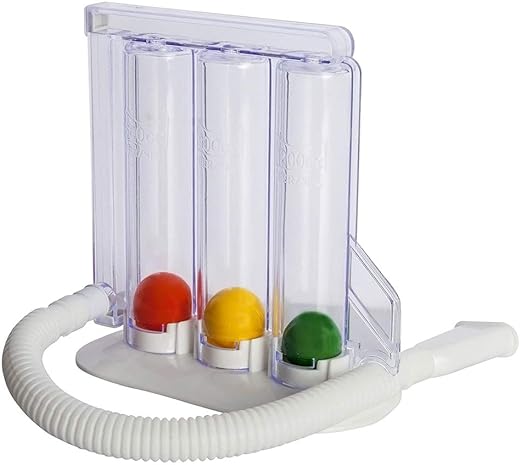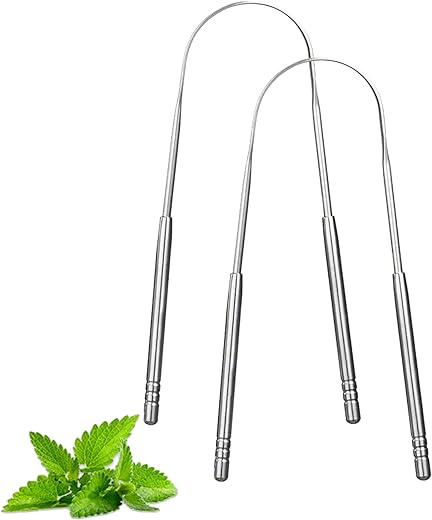Creating a stress-free environment both at home and work is crucial for maintaining overall well-being. It involves simple steps like decluttering spaces, establishing routines, practicing mindfulness, setting boundaries, and fostering positive relationships. Managing stress not only improves physical health but also enhances mental well-being, boosts productivity, and strengthens relationships. Implementing these strategies can significantly reduce stress levels and lead to a happier, more balanced life.
Top stress-busting techniques for your wellbeing
Identify Stress Triggers
- Note your surroundings. Pay attention to situations, people, or places that make you feel tense or anxious.
- Keep a journal. Record the events or circumstances that lead to stress reactions for you.
- Identify patterns. Look for recurring themes in your recorded stress triggers to pinpoint common sources of stress in your environment.
Establish Boundaries
- Define specific work hours and stick to them religiously.
- Designate a separate workspace in the home free from distractions.
- Turn off work-related notifications during non-work hours to fully disengage.
- Practice self-discipline in honoring these boundaries to maintain a healthy work-life balance.
Organize Your Space
- Start by decluttering the item in each space to ensure you’re keeping only what you need.
- Assign specific purposes or zones to different areas in your home or workplace.
- Invest in organizers such as boxes, shelves, or drawer dividers to keep items in their designated spots.
- Regularly reassess your space and declutter as needed to maintain organization and efficiency.
Practice Mindfulness
- Practice Meditation: Find a quiet space, sit comfortably, close your eyes, and focus on your breath. Breathe deeply, in and out, feeling the sensation of each inhale and exhale.
- Deep Breathing Exercises: Inhale slowly through your nose, expanding your chest and diaphragm, hold your breath briefly, then exhale slowly through your mouth. Repeat this several times to calm the mind and body.
- Stay Present: Whenever your thoughts wander, gently guide your focus back to your breath or the physical sensations in your body. Let go of distractions and worries, returning to the present moment with each breath.
Engage in Physical Activity
- Incorporate regular exercise into your routine to release endorphins, which are natural mood lifters and stress fighters in the brain.
- Try activities like jogging, cycling, swimming, or yoga to experience the mood-boosting benefits of endorphins in action.
- Increase the duration or intensity of your workouts for a higher endorphin release, leaving you feeling more energized and positive.
Establish a Routine
- Start by setting aside specific hours during the day for work to maintain productivity. For example, allocate 8:00 AM-12:00 PM solely for work tasks.
- Schedule in periods for relaxation to unwind and refresh your mind. This could be having a 30-minute break for tea or going for a short walk.
- Prioritize self-care activities like exercise or meditation by blocking out time for them in your daily routine. Maybe commit to a daily yoga session at 6:00 PM for mental and physical well-being.
Communicate Effectively
- Be open and honest in your interactions with colleagues and family members. This includes being transparent about your thoughts and feelings.
- This practice serves to prevent misunderstandings that can arise from lack of communication.
- When everyone is on the same page, it not only reduces stress but also fosters stronger relationships.
- Make an effort to communicate clearly and effectively, as it is the cornerstone of healthy and successful relationships.
Seek Support
- Reach out for help: Contact a therapist, counselor, or support group immediately if stress starts to feel unbearable.
- Schedule an appointment: Make it a priority to set up a meeting with a mental health professional to discuss what you’re going through.
- Join a support group: Consider joining a local or online support group to connect with others facing similar challenges and receive valuable advice and encouragement.
- Remember you are not alone: Don’t hesitate to lean on others for support during tough times – seeking help is a sign of strength, not weakness.
Take Breaks
- Schedule short breaks every hour to relax and recharge.
- Step away from your workspace and engage in a different activity to allow your mind to rest.
- Return to your tasks feeling more focused and energized by incorporating these regular breaks into your day.
Practice Gratitude
- Take a moment each day to pause and reflect on three things you are grateful for.
- Write these down in a journal or simply think about them in your mind.
- Focus on the positive emotions these things bring and let them shift your perspective to the uplifting aspects of your life.
Achieving Balance and Serenity
Conclusion:
Achieving a stress-free environment both at home and work is not only possible but also vital for your well-being. By following the strategies of identifying triggers, setting boundaries, organizing spaces, and practicing mindfulness, along with staying active, maintaining routines, effective communication, seeking support, taking breaks, and nurturing gratitude, you can lead a healthier and more balanced life. Embrace these practices and watch as your surroundings transform into peaceful havens where you can thrive and find contentment.
Simplify for Success
Top Tips for Mastering Stress-Relief Techniques
- Practice deep breathing exercises: Inhale deeply through your nose, hold for a few seconds, and exhale slowly through your mouth. Repeat several times
- Try mindfulness meditation: Focus on the present moment without judgment. Take a few minutes to sit quietly and pay attention to your thoughts and sensations
- Engage in physical activity: Go for a short walk, ride a bike, or do some light stretching to help release tension and boost endorphins
- Listen to calming music: Find soothing music or sounds that help relax your mind and body. Take a few moments to listen and unwind
Subheading: “Managing Stress with Ease
What role does mindfulness play in stress-relief techniques?
Mindfulness plays a crucial role in stress-relief techniques. By focusing on the present moment and being fully aware of one’s thoughts, feelings, and sensations, mindfulness can help individuals better manage stress. Practicing mindfulness techniques, such as deep breathing, meditation, or yoga, can help reduce anxiety and promote relaxation. Research has shown that incorporating mindfulness into daily routines can lead to lower stress levels, better emotional regulation, and improved overall well-being. It can also help individuals develop a more positive outlook on life and increase resilience in dealing with stressful situations. Overall, mindfulness is a powerful tool that can enhance stress relief and contribute to a healthier, more balanced lifestyle.
Are there alternative stress-relief techniques for those who may not find mainstream methods helpful?
Yes, there are alternative stress-relief techniques available for individuals who may not find mainstream methods helpful. These options can include practices such as yoga, meditation, deep breathing exercises, aromatherapy, acupuncture, massage therapy, spending time in nature, listening to music, practicing mindfulness, and engaging in creative pursuits like painting or writing. It’s essential to explore different techniques to find what works best for you in managing stress. It’s advisable to consult with a healthcare provider or a professional to determine the most suitable alternative methods for your individual needs.
How frequently should stress-relief techniques be practiced?
Stress-relief techniques should ideally be practiced regularly for maximum benefits. It is recommended to incorporate these techniques into your daily routine to help manage stress effectively. Consistency is key, so establishing a regular practice, whether it be daily or several times a week, can help in reducing stress levels over time. Remember, self-care is important for both mental and physical well-being, so prioritize making time for stress-relief techniques in your routine for long-lasting benefits.
Is it possible to combine different stress-relief techniques for better results?
Yes, it is both possible and highly beneficial to combine different stress-relief techniques for better results. Each technique targets stress from different angles and may work synergistically to address various aspects of stress. For example, a combination of meditation, exercise, and deep breathing can help calm the mind, release physical tension, and reduce stress hormones effectively. Experimenting with different techniques and finding what combination works best for you may lead to enhanced relaxation and overall well-being.
Are there specific stress-relief techniques for different types of stress?
There are a variety of stress-relief techniques tailored to different types of stress. For instance, for physical tension, methods such as progressive muscle relaxation and yoga can be beneficial. When dealing with emotional stress, strategies like deep breathing exercises, mindfulness meditation, and journaling can be helpful. Cognitive-behavioral techniques may be effective for managing constant worry and anxiety. It’s essential to explore and find the techniques that work best for each type of stress one is experiencing.
Are there relaxation techniques that work well for reducing stress?
Yes, there are several relaxation techniques that have been proven to effectively reduce stress. Examples include deep breathing exercises, mindfulness meditation, progressive muscle relaxation, and gentle physical activities such as yoga or tai chi. These techniques can help lower cortisol levels, decrease heart rate and blood pressure, and promote a sense of calm and well-being. It is important to find a technique that works best for each individual’s preferences and lifestyle in order to effectively manage stress.
Do stress-relief techniques require professional guidance or can they be self-taught?
Stress-relief techniques can definitely be self-taught. While professional guidance can be helpful in some cases, there are many techniques that individuals can learn and practice on their own to effectively manage stress. Breathing exercises, physical activity, mindfulness, journaling, and setting boundaries are just a few examples of self-help strategies that can be effective in reducing stress levels. By exploring and experimenting with different techniques, a person can find what works best for them and incorporate them into their daily routine. Ultimately, the goal is to find what brings relief and support your mental well-being.
Can stress-relief techniques help improve physical health as well?
Yes, stress-relief techniques can help improve physical health. Chronic stress can have a negative impact on the body, leading to issues like high blood pressure, weakened immune system, and digestive problems. Implementing stress-relief techniques such as exercise, mindfulness, deep breathing, and yoga can help reduce stress levels and in turn improve physical health. Research has shown that managing stress effectively can lead to better overall health and well-being.
Can stress-relief techniques help improve productivity and focus?
Yes, stress-relief techniques can help improve productivity and focus. When an individual feels overwhelmed, stressed, or anxious, it can be challenging to concentrate and be productive in their tasks. By incorporating stress-relief techniques such as deep breathing exercises, meditation, physical activity, or relaxation techniques, individuals can reduce their stress levels, improve mental clarity, and enhance their ability to focus on their work. Taking breaks to manage stress can also prevent burnout and increase overall productivity levels.















Implementing boundaries with technology use is something we all should do more proactively.
Are there any specific work-from-home stress-relief strategies you swear by?
Establishing a calming home environment positively impacts productivity at work.
I’ll definitely try incorporating more mindfulness practices into my daily routine.
Practicing gratitude daily has been a game-changer in how I approach stress management.
Setting boundaries between work and home life is key to maintaining balance.
Creating a stress-free home environment is crucial for overall well-being!
I appreciate the emphasis on self-care in this article.
Does anyone have recommendations for relaxation techniques at work?
I found the tips on decluttering very practical and easy to implement.
I enjoyed the focus on fostering positive relationships for reducing stress levels.
Prioritizing mental health should not be overlooked in pursuit of productivity.
What are some effective ways to reduce stress during busy workdays?
Physical exercise is a wonderful way to release pent-up stress and tension!
It’s important to remember that creating a stress-free environment takes time and effort.